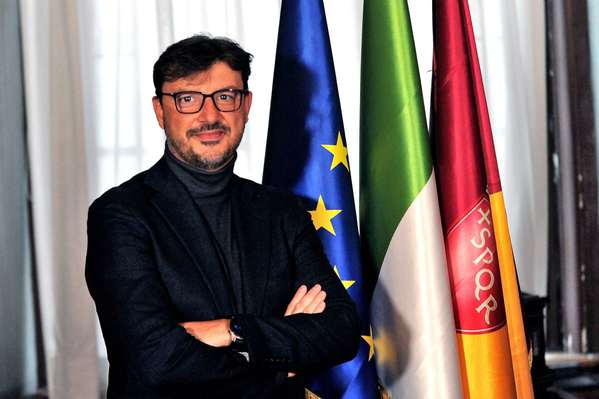Blog
Eugenio Patanè – Councilor for Mobility of Roma Capitale
Eugenio Patanè
31 March 2023

Congestion and poor air quality are an issue of concern in the Eternal City of Rome, where the mobility sector is responsible for about a quarter of CO2 and pollutant emissions. At the same time, Rome is one of the 100 EU Mission Cities that voluntarily decided to achieve climate neutrality by 2030.
There is, therefore, a need to modernize city transport infrastructures to be more sustainable, encouraging and investing in local public transport, mainly in the railway sector and in the transition towards sustainable mobility technologies.
The goal is a “15-minute city” which, from a transport point of view, means a user must be able to reach the “hard” mobility system by foot or bicycle within that time. To do this, the central public transport network, made up of rail transport – railways, metro and trams – and road transport – buses and trolleybuses (filobus) – must be complemented by active mobility systems. Subways and railway stations should become hubs for the so-called first/last mile. In other words, we have to create a real intermodal travel system in Rome, capable of transforming what is now a “city for cars” into a “city for people”. A city that fights climate change, works for public health and fights congestion.
The first issue is to complete the rail network that is the backbone of Rome, with an impressive extension of the tramway network from six lines to seventeen by 2030; to increase the number of metro lines from three to four lines, including the 2025 Jubilee planned extension of the third “C” line (the two wandering stations of Colosseo and Porta Metronia). The other asset is the Rome Railway Node, with the opening of 8 new stations in the city of which three for the Jubilee, a major doubling of the railway lines serving the city, allowing the city to differentiate urban and metropolitan services finally, by 2030, to close the railway ring that would form Rome’s circular line.
We also started the complete renewal of the tram fleet as part of this strategy. The tender for 121 new trams was published a few weeks ago and is the largest in Europe. And the same for our bus fleet. Our aim is to have more than “twelve hundred” new vehicles by 2026 that will replace old and end-of-life vehicles. The EU Recovery Plan has allocated over €292 million to Rome for the renewal of the fleet to be used for the purchase of 411 electric buses and for the infrastructure necessary for vehicles’ commissioning (two dedicated depots).
In addition, we are implementing a serious policy of disincentivizing private traffic in the city, which we started last year with the introduction of the Low Emission Zone called the Green Belt covering about half of the city inside the ring road (GRA) that will remove about 350,000 of the most polluting cars from Rome’s roads in two years. And with the Jubilee opening on December 8, 2024, a new congestion charge will start in the inner center zone of 28 square kilometers.
Soft mobility has precise goals: 150km will be implemented by 2026, including the so-called GRAB – Grand Ring Road of Bicycles – of around 50km, another 20 bike paths to be built with funds from the Recovery Plan, and other bike paths like the Monte Ciocci – Valle Aurelia – San Pietro will recover the former railway bridge and close the gap between old pilgrim paths and the Vatican City.
Sharing mobility is necessary for promoting integrated and intermodal travel. The city administration recently approved a new regulation with the goal of spreading scooters and e-bikes throughout the municipal area, in order to permit their use as a last mile vehicle. We believe innovation is essential to realize a real paradigm shift to achieve sustainable urban mobility.
Innovation means – for example – new green fleets, new technologies to protect restricted traffic areas, infomobility, new infrastructural solutions (intelligent traffic lights), new sensors and, fundamentally, the launch and use of the MaaS system. Rome was the winner of a tender called Maas4Italy, within the Italian Recovery and Resilience Facility (RRF). MaaS could really be a revolution because, after many decades, a kind of mobility seen not through the operator’s eyes but through the user’s eyes, and tailored to their travel needs, will finally be possible.
We are very pleased that 11 operators took part in the first tender to choose MAAS operators in Rome, demonstrating that our city is attractive from the point of view of mobility and transport. We want Rome to be not only the eternal city but also the city of the future.
Category: Blog
Tags: